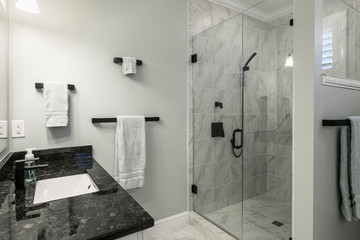What You Should Know About Condos
Condos For Rent In Southern Pines NC are less expensive than single-family homes and are ideal for first-time homebuyers. They also typically offer a sense of community because HOAs frequently organize socializing events like pool parties, barbecues, and doggy playdates.

However, condo owners must pay HOA fees and abide by community rules. These can include pet restrictions and guidelines regarding when and where you can host an event.
1. Shared Costs
Condos are a popular option for people looking to avoid the big upfront costs of owning a home. They also offer a lot of the benefits of homeownership, such as maintenance and security. But there are a few things that potential condo buyers should be aware of before they buy one, including how condo fees work and what they include.
When buying a condo, you have to pay for common expenses that are shared with the rest of the condo community. These expenses can include building hallways, elevators, parking lots, and other shared areas. Condo owners also share the responsibility for maintaining and repairing these areas. The cost of these fees varies depending on the size, location, and amenities of a specific condo building.
These fees are typically a combination of two separate payments: property taxes and common charges. Property taxes are billed separately, but the remaining amount is divided by each condo owner’s percentage of ownership in the condominium corporation, which is based on square footage and location within the building. The percentage is then multiplied by the total operating costs to determine a person’s condo fee.
In addition to operating expenses, condos may also have a reserve fund for major repairs or replacements of common elements like the roof or boiler. This ensures that the financial burden of these large expenses is shared by current and future condo owners instead of being borne solely by those who own a particular unit at the time the repair or replacement is needed.
It is important for potential condo buyers to understand how these fees work before they buy. Having a clear understanding of what these fees cover can help them estimate their monthly expenses and make better decisions about which property to purchase. Moreover, it is wise for them to find out if condo fees have been adjusted for a specific period to cover large expenses or permanently for consistent expenses like service contracts or rising fuel costs.
2. Shared Amenities
Condos often include premier amenities that single-family homeowners can’t afford to install on their own, including pools, gyms, and social spaces. These features can give condo owners a sense of community and reduce maintenance costs by reducing the amount of time it takes to maintain a property.
These amenities may come at a premium, but they’re worth it to many potential buyers. They can make a condo an appealing option for city dwellers who don’t want to deal with the expense and upkeep of maintaining a home in a popular or remote location.
However, these shared amenities can also create some issues with privacy. Residents live in close proximity to each other, so they may hear their neighbors’ celebrations or arguments at all hours of the day and night. This can be especially bothersome for families with young children who need a quiet space to sleep and study.
Many condos offer gated or locked entries, doorkeepers, and even security professionals to help with residents’ safety. This can be reassuring for people who live alone or travel frequently, and it can help prevent break-ins or other crimes. This is a major benefit for many buyers and can provide peace of mind, especially if it’s included in the price of the condo. Many condominiums are located in central areas with convenient access to transportation, shopping, and restaurants. This allows residents to save on transportation expenses and enjoy a more urban lifestyle. Some of these communities even feature community gardens, which can provide a green area for their residents to enjoy.
3. Noise
Condo living can be a wonderful alternative to owning a home. Instead of worrying about a lawn to mow, flowerbeds to plant, or a driveway to shovel, homeowners only have to focus on the inside of their homes. This can be ideal for retirees, people who travel a lot, or people who prefer to live in an urban setting. However, some drawbacks of condos include the lack of privacy and noise from neighbors.
Condos often feature shared walls, ceilings, and floors, so residents must share their space with neighbors. This can result in hearing next door’s conversations, footsteps, and even music blaring through the walls. This can become annoying and obnoxious, especially if there are children or people who like to listen to loud music.
Soundproofing a condo can be an expensive option. There are, however, more cost-effective ways to make your condo less noisy. For example, you can install audio blankets that help reduce airborne noise. These blankets are typically made of quilted fiberglass and can be easily installed on the walls of your condo.
In addition, installing decoupling can help reduce the amount of noise that passes through walls. This technique involves separating the drywall sheets by putting an additional layer between them. This helps prevent the different sounds from passing through two layers.
In general, soundproofing a condo is more affordable if done during construction rather than after. However, it’s not always possible to do so. If you do decide to soundproof your condo, first locate the source of the noise. Start by turning off the music or reducing the volume of your television, and then walk around to find out where the noise is coming from.
4. Community Rules
Condos come with a set of rules that you have to follow, regardless of whether you own or rent your unit. These are called covenants, conditions, and restrictions (CC&R) and cover a wide range of issues, from what you can do with your pets to how many hours of quiet time are allowed. These are good things and help ensure that the community runs smoothly. However, for people who prefer a more independent lifestyle, condos can be restrictive.
For example, many associations won’t allow homeowners to put solar panels on their roofs or may limit the places where owners can park vehicles like trailer trucks or campers. They may also prohibit certain types of activities, such as putting up notices or signs in common areas, defacing property, or running a business out of a condo unit.
It’s important to talk to your neighbors and ask about the condo association before you buy a unit. This will give you a chance to see who your neighbors are and how well the condo is run. You should also find out what the vacancy rate is and if there are any ongoing maintenance projects that will require funding in the future.
You should also ask the HOA for a copy of their budget. This will show you what they spend their money on, how much debt they have, and whether there are any reserves. It’s also a good idea to get a copy of the CC&Rs and other documents that you will have to sign before purchasing a condo so you can understand what your responsibilities are as a homeowner. The documents will typically have a rescission period, so you can walk away from the sale if you are not happy with the terms of the agreement.
5. Difficult to sell
Condos are usually less expensive than single-family homes, making them a good option for homebuyers on a budget or those who need to downsize. However, since the value of a condo can decrease over time, it’s important to consider the long-term costs of purchasing a condominium before you make your decision.
The biggest challenge with selling a condo is getting the best price for your property. To determine the right listing price, you’ll need to compare your condo with others in the area that have recently sold. To do this, look at the size of the home (square footage and number of bedrooms and bathrooms), the quality of the renovations, and any special features or amenities it has.
Another thing to consider is the association fee that your condo building charges. These fees cover the maintenance of common areas like the grounds, pools, and lobbies. They’re an extra cost that you will need to disclose to potential buyers so they can factor them into their purchase decision.
Finally, it’s a good idea to work with a real estate agent who has experience in the condo market. They can help you set a fair listing price and promote your condo to the right audience. They can also help you understand how the process of selling a condo differs from that of selling a house.
The best time of year to sell a condo is also a crucial consideration. While conventional wisdom suggests that spring and summer are the best seasons to list a house, this won’t always apply to condos. If you’re selling a condo in a popular vacation destination, for example, waiting until before peak season might help you get a better price.
How to Properly Care for Your Generator and When to Call in a Professional for Generator Repair
A generator is a piece of equipment that can be crucial to your survival in many situations. It’s important to know how to properly care for your generator and when to call in a professional for repairs.

Routine maintenance can help prevent issues from becoming bigger and more expensive repairs down the road. It can also keep your generator running efficiently and effectively for longer.
Generators are a lifesaver when it comes to power outages, but they can also be a safety hazard if they are not working properly. If your generator is in need of repair, you need to have it fixed as soon as possible.
A common problem that homeowners often experience with their generators is damaged wiring. This can range from minor issues such as frayed wires to more serious problems like overheating. Regardless of the extent of the damage, it is best to have your home’s electrical system inspected by a licensed electrician to ensure that there are no underlying issues with the circuits.
Another problem that can be caused by damaged wiring is a power surge. This can happen when you use a device that draws more power than the breaker is rated for or if you use multiple “heavy load” devices at the same time.
When this happens, the breaker will automatically shut off the electricity. This is why it is important to only use the amount of electricity that your generator can handle and to make sure you are not using any other equipment at the same time.
During normal usage, your generator will be exposed to a lot of heat and other harsh conditions. This can cause issues with the motors, circuit boards, and transfer coils.
It is always a good idea to have your generator inspected regularly, especially by an experienced professional. This will allow you to identify small issues before they become larger and more problematic.
You should also inspect the exterior of your generator from time to time and pay attention to anything that seems to be deteriorating or damaged. This could include frayed wires, corrosion, or even puddles of liquid around the generator.
Finally, it is a good idea to check your generator’s battery every few years. This is because batteries need to be replaced after a certain period of time in order to maintain their optimal performance.
Keeping your generator in good condition can protect you from many dangers, including fuel leaks and blown switches. When this occurs, it is important to call a professional for repairs as soon as possible so that you can avoid losing your property or your livelihood because of a malfunctioning generator.
Fuel is the most important part of your generator’s operation and is the source of the majority of generator failures. Keeping the fuel fresh and free of sediment helps prevent problems.
Inspect the tank regularly and add fuel if needed. Keep the tank clean by draining it and refilling it with fresh fuel before you use it again, or hire a professional to do this for you.
The fuel tank should also be checked for leaks, cracks, and signs of deterioration or aging. If any of these are present, it is best to replace the tank and its hoses.
A fuel pump is another critical component of a generator. It transfers fuel from the tank to the engine, and it can be contaminated with dirt, rust, and debris. It should be replaced with a new unit if the old one has been soiled or damaged, as well as a new fuel filter and a sock for the inlet strainer.
Many generators have a high-fuel-level alarm that will trigger when the fuel level is above the set point. This will cause the unit to shut down if it can’t start. The alarm will clear itself when the fuel levels drop below the set point, but if it doesn’t, you should call for help to ensure that the system is working properly.
Air can clog the injectors of your fuel system and make it difficult to start the engine. This is a common problem with generators that are not used on a regular basis. This can be caused by a faulty fuel line, air in the fuel pump, or check valves that are connected to the cylinder head and injectors.
It is important to keep the air from affecting your generator’s performance, so it is always a good idea to run it occasionally during weekly inspections. Running the generator for a few minutes will allow the block heater to flash off some of the air that is inside the injector solenoid, so it will be less likely to cause a fuel system failure.
The generator belt is a vital part of your generator’s operation, helping to power the electrical system. It can become weak or break with age, so it’s important to check its condition before you need to repair it.
If you’re not sure if the belt is in good condition, a visual inspection should help determine whether it needs to be replaced or repaired. This includes examining the belt for breaks or cracks and checking its tension to ensure that it’s properly tightened.
Another indication that a belt is in need of replacement is if it makes an unusual noise during use. Generally, this type of noise is caused by slippage between the pulley and the belt.
When the drive belt is slipping, it can cause vibrations in the engine or even an overheated motor. It’s also possible for the belt to crack, which can lead to serious damage to your engine.
This is a sign that your belt is in need of replacement and should be checked out immediately. A weakened belt can also cause a squealing noise.
Depending on your vehicle, this type of sound can be heard whenever the car is in motion or while it’s stopped. It can be annoying, but it’s a quick and easy way to know that your belt is in need of replacement.
A weakened belt may also make a shrill screech that’s especially noticeable in the winter. This is an indication that the quality of the material used to manufacture the belt is poor.
If you’re concerned about your belt, a professional can replace it for you without causing further damage to the motor or the electric system. They’ll also make sure that the new belt is properly installed and tensioned to ensure a longer lifespan for your generator.
Once you have the new belt, it’s a good idea to inspect it regularly for signs of wear. This can include a crack, break, or sagging that’s more than 1.5 centimeters.
The generator belt also plays a role in the function of your automatic transfer switch. If it trips, the automatic transfer switch will stop working until you manually reset it. This can be dangerous if you’re not familiar with the functions of an ATS, so it’s best to let a professional do it for you.
Engine failure is a serious concern for any generator. Whether you have a diesel-powered model or a gasoline-powered unit, a problem with your engine can lead to the catastrophic failure of your entire system.
The most common cause of generator engine failure is a battery issue. When the batteries on your generator get old, they lose their charge and become corroded or covered with sulfation. This can prevent the engine from starting when you need it to.
Another issue that can cause your engine to fail is a lack of oil. Most newer generators have an “oil alert” that lets you know when it is time for a new top-up. Using the wrong type of oil or forgetting to fill up can lead to serious damage to your engine, so it’s important that you keep your generator topped up with the right kind of oil at all times.
Oftentimes, it’s the clumsy owner who causes this problem to arise. Disregarding the signal can mean that your engine will have to work harder than it should to start up, which can eventually break down the engine and cause it to malfunction.
A clogged fuel filter is also a common cause of generator engine failure. It traps the sediment that collects in the tank and clogs your generator’s engine.
You should never use stale gas or have your generator run on stale fuel. If you haven’t used your generator in a while, it is a good idea to drain the fuel tank and add fresh gas to the carburetor before starting it up again.
The engine block on a generator is an intricate piece of machinery that needs to be maintained regularly to ensure that it performs well. Performing regular maintenance will help your generator last longer, perform at its best, and keep you from having to make expensive repairs down the line.
Modern Wood Fence Designs
There are a lot of options when it comes to fencing, and Modern Wood Fence design is one of the more versatile materials. It can look both rustic and modern, depending on the design.

It is important to choose a material that will suit your climate and your style preferences. Choosing a strong, durable material will help ensure that your fence lasts for years to come.
Cedar fences are a natural choice for homeowners who want a fence that is attractive and low-maintenance. Cedar is a beautiful and durable wood that can last for years, and it can be stained to give it a unique look.
When choosing a material for your fence, consider the following factors: durability, cost, maintenance and style. It is also important to select the right type of wood to suit your property.
If you are looking for a classic style of fence, western red cedar is the best option. This type of cedar is naturally resistant to rot, pests, and water, and it has a long lifespan that can easily be extended by staining the fence.
Another advantage of western red cedar is that it is less enticing to termites than many other types of wood. The oils in cedar make it more repellent to insects, which can help keep your fence free from termites and other wood-eating creatures.
In addition, western red cedar is stable and remains flat, making it a good choice for fencing. The wood’s natural tannins and resins also help prevent mold, rot and other issues that can lead to damage.
Several different kinds of fences are available in cedar wood, including split rail and plank. Both types of fences feature precise spacing between boards and create a classic look.
Modern wood fences often use butted or gapped boards, which create a sleek appearance that stands out in your yard. This style of fence can be constructed using a variety of materials, but wood is a popular choice because of its natural resistance to pests and other outdoor elements.
Staining your fence can extend its life and make it more attractive, but you should choose a quality stain product to ensure that your fence is protected against solar and water degradation. A premium stain will also help protect the wood from fading and discoloration, which can be a common problem with untreated fences.
Before staining your fence, ensure that you replace any broken pieces and hammer in any nails that are visible above the surface. You should also inspect your fence for any signs of rotting or splitting. If you notice any signs of damage, repair the fence immediately.
Redwood is a favorite for modern wood fences because it offers durability and an elegant appearance that will hold up to the harshest forces of nature. Besides being aesthetically pleasing, redwood also provides privacy, which is a popular need for many homeowners.
There are many different types of redwood fencing that you can choose from. There are some that are more affordable and easy to install, while others offer more custom options. There are even redwood fences that can be painted, stained, and sealed to achieve a more customized look.
Some of the most popular types of redwood fences include board on board, horizontal, and ranch rail. All of these fence styles are extremely durable and provide excellent privacy.
* Board on board: This style of fence is considered the work horse of the industry and is oftentimes constructed using 2x4x16 thick cut top rails along with heavy-duty Douglas fir pressure treated 2×8 kick plates to make an incredibly strong fence. The boards are spaced evenly apart and overlapping each other for a very visually appealing, yet extremely durable fence.
This type of fence also allows breezes to flow through it, so it’s great for warm weather. It also looks great in any setting, from a traditional ranch house to a modern contemporary home.
Another option for redwood fencing is a piano key style, which was originally derived from picture frame fences. This is a very custom style that will separate your fence from your neighbors and create an entirely unique look for your yard.
Things You Should Know Before You Start a Kitchen Renovation
Whether you’re ready to make the jump to a full kitchen renovation or simply want to give your existing space a refresh, there are a few things you should know before you start.

First, set a budget for your project. This will help you to stay within your means and get the most value out of the remodel. However, if you want hassle free, then contact Kitchen Remodeling Tacoma WA for professional services.
Kitchen cabinets play a critical role in the functionality of every kitchen. They provide storage space for a variety of items, including pots and pans, food preparation tools, cleaning supplies and more. Without these essentials, kitchens can become cluttered and disorganized.
Cabinets are built-in units with doors and drawer fronts that can be purchased in various sizes, styles and designs. They are also available in different colors and can be customized to match the look of your home.
A kitchen renovation is an ideal time to replace old cabinets with new ones. This can be done as a DIY project or with the help of a professional contractor.
The first thing to do is choose the design you want for your new cabinets. There are many options to choose from, but they all need to fit your personal style and budget.
If you are looking for a more traditional look, select light-colored woods like oak or maple. These can give your kitchen a brighter appearance and make it seem larger. However, if you prefer a more dramatic, furniture-like effect, dark woods like cherry or mahogany can be a better choice.
You can also choose between solid-wood or laminate finishes, as well as a variety of hardware styles to complete your new cabinetry. For example, hidden or minimalistic handles can add a sleek finish to your cabinets.
Another option is to simply reface the existing cabinetry in your home. This is a cost-effective option for homeowners who are happy with the layout of their current cabinets and only need to refresh the look.
Aside from refacing, you can also upgrade your cabinets to meet your specific storage needs by installing pullouts for pots and pans or an oversized drawer for baking sheets. These features can help you save time and energy during meal preparation, and they can make your kitchen feel much more organized and efficient.
Cabinet refacing is a great option for homeowners who are willing to do the work themselves. This process allows you to completely transform the look of your kitchen while saving money on the project. It is an easy task that requires only basic skills and equipment.
Choosing your countertop materials is an important step in any kitchen renovation. You want to select a material that meets your style, budget and practical needs, as well as fits the space and the way you use the room.
Granite countertops are a popular choice for many homeowners who wish to elevate the look of their kitchens. They are available in a variety of colors and are a durable, natural-looking material that will add value to your home.
Quartz countertops are another popular option, as they are made of a nonporous material that does not require the application of chemicals to maintain their appearance. They are also a very safe and nontoxic choice for households with children or pets.
Concrete counters are a great option for a rustic kitchen design and can be sealed to withstand high-use. They are a little more costly than other options, but have a unique, organic quality that can be quite attractive.
If you’re looking for a less expensive option, laminate is an inexpensive and easy-to-clean choice that can be found in a wide range of styles. However, this material does not resemble stone or wood and may not be as long-lasting.
What Does an Expert Plumber Do?
Plumbers can troubleshoot and solve problems correctly the first time. A good plumber understands water science and the best practices to repair common plumbing issues. They can answer all your questions and explain the work that needs to be done in simple terms. They also have excellent customer service skills and can communicate well with customers.

A good plumber is a professional who can assess and fix complex plumbing issues. They should be well-trained, licensed, and up-to-date on the latest technologies. While do-it-yourselfers can handle some plumbing issues, it is advisable to call for help if you experience serious problems like clogged drains. A plumbing expert will be able to properly solve your issue and prevent it from happening again.
This can help you make the best decision regarding the plumber that you hire for your job. Moreover, you’ll be able to save money and time when you hire a professional instead of trying to fix your plumbing issue yourself. The best plumbers are those who have completed a long apprenticeship and have gone through extensive training. They are able to master Federal and state regulations, building codes, and advanced plumbing skills.
Listening skills are important to a plumber because they help them understand the client’s requirements. It also helps them understand what kind of tools are required and how long the job will take. The best plumbers know how to listen to their clients and make them feel comfortable. They also have the patience to explain complicated plumbing issues simply and fully.
A good listener will also be able to paraphrase what they have heard to ensure the speaker’s comprehension. This can be done by asking questions, such as “Is this what you mean?” or “Can you repeat that?” It is a good way to improve the quality of your communication and reduce misunderstandings.
Reasonable service charge card. A reputable Expert Plumber knows that it is important to have a reasonable service charge card. Having one is crucial because it shows your customers that you care about their business and want to help them save money. This way, your customers will be more likely to use you again in the future. It is also important to keep in mind that you do not want to charge your customers more than they are willing to pay, as this could be a turnoff for many people. In addition, you should ensure that your customers know how their service charges are being used.
If you want to extend the life of your plumbing system and avoid expensive emergencies, you need to schedule routine maintenance. A plumber can inspect your entire home’s plumbing system and identify problems, like leaks or mineral buildup, before they become costly and dangerous to repair. The plumber will also look at the water pressure in your home and adjust it if necessary. This can help you avoid high bills and save on energy expenses.
Regular maintenance will also keep your sewer drain lines clean and free of clogs. If a clog does develop, a plumber will use a motorized drain auger to break it down. Maintaining a plumbing system requires a lot of technical knowledge and hands-on experience. It also demands the ability to problem solve and deal with customers in a friendly manner.
Home additions are a great way to increase the size of your house. They can help growing families, hold large gatherings, and provide storage space. They’re also a great investment because they can significantly boost your home’s value. However, they’re often more expensive than home renovations and basement or attic conversions. If you’re planning on a home addition, consider how it will affect your plumbing system. Adding an extra room may result in drains being clogged, leaks, or the need to upgrade your system.
You’ll also need to check local zoning regulations to ensure that your new addition meets requirements. This could include setbacks, height limitations, and floor area ratios. Choosing the right design aesthetic, materials, and finishes is also important to blend the addition with your existing house. If you’re unsure how to do that, seek the services of a professional. They can advise you on the best options and make recommendations to avoid costly mistakes.
The Basic Components of Doors
Attleboro Doors are the barrier between a space and the outside world. They serve many purposes, including ensuring privacy by preventing unwanted attention from outsiders, separating areas with different functions, allowing light to pass into or out of a space, controlling ventilation or air drafts so that interiors may be more effectively heated or cooled, dampening noise, and blocking the spread of fire.

A door frame is a framework that supports a door and allows it to open and close. It is usually made of wood, but it can also be manufactured from other materials. Doors come in a variety of different sizes and shapes.
A strong door frame can help boost the security of a property, as it will prevent burglars from breaking into the house. However, you should ensure that the frame is built correctly to provide support for the door and its hinges.
The frame is composed of side jambs, sills, and head jambs. It can be made from different materials and be either primed or painted.
The frames are used to support and level a door so that it can hang evenly from the floor. A door that is not hung properly can swing unevenly or be crooked, which can lead to a number of problems. Additionally, a door that is not properly leveled can leave spaces between the frame and the floor, which could result in energy losses.
Door jambs are one of the most important parts of a door frame. They provide a stable base for the rest of the frame and the door itself. In addition, they are crucial in making doors and windows operate properly.
When replacing a door, it is crucial to measure the thickness of the door jamb. This measurement will help you ensure that your new door can fit into the jamb and not be too wide or narrow.
A standard door jamb thickness is 4-9/16 inches, but this depends on the thickness of the wall studs in your home. You may want to get the thickness of your door jamb verified by a professional before you begin work.
Another thing to note is that a door jamb should be plumb, meaning it is perfectly vertical. If it is not, the door will not be able to close properly or might even fall off its hinges.
The “plumbness” of your door jamb is also important for aesthetic reasons, as it helps to give the door a nice, smooth surface. It’s also necessary for security, since a door jamb that’s not level can make it difficult to open or lock a door.
A final detail to consider is the material that you use for your new door jamb. While wood is often the most common choice, other materials can be used, such as fiberglass. However, it is important to choose a durable material that will stand up to the weather and any foot traffic it may be exposed to.
A sill is the bottom piece of a door that helps to keep water, dust, and other contaminants out of the home. In addition, a properly adjusted sill can help reduce energy costs by creating a better seal against the exterior environment.
A foundation-mounted sill plate (also called a “mud sill”) is the first piece of wood that’s installed in a house when it’s framed. It sits between the floor joists and the concrete that forms the foundation. They’re usually 2×6 or longer and can be treated for moisture resistance.
They’re typically covered by wall sheathing and siding on the outside of a house, but they’re visible inside from the basement or crawl space. To help prevent water from leaking into the house, many homeowners install a layer of polyethylene foam between the sill plate and the concrete foundation.
Give Your Bathroom a Fresh Look With a Bathroom Remodel
If you want to give your bathroom a fresh look, you can do so by remodeling. However, a bathroom remodel can involve minor changes to the structure. The focus is on changing the space’s aesthetic, layout, and usefulness.

Before you begin a bathroom remodeling project, consulting with a professional is the best decision. The professional will be able to spot problems that a homeowner may overlook. Remember, money is the bottom line in real estate. It is important to stay within your budget and prioritize your needs. After all, the bathroom is the most important part of your home. Consider the cost of the project before you begin. Once you have a budget, you can begin planning and selecting the products and materials needed to complete the work.
Before hiring a contractor, you should first decide what you want your new bathroom to look like. A good contractor should be able to communicate well with you and work within the agreed budget and timeframe. They should also be good problem solvers. Ensure your bathroom remodeling contractor can coordinate a team of professional designers and craftsmen to complete the project on time and within budget. Many contracting companies even offer in-house design services. Gather ideas for your bathroom and write them down. Also, be prepared for a site visit.
Bathroom remodeling costs can vary widely depending on the scope of the project and the material used. Generally, the larger the bathroom, the more expensive it will be to remodel because larger wall space, floors, and fixtures will require more materials and labor.
A master bath, for instance, will cost more than a half-bath because of the larger area to work with, and it will also be more costly to install luxury items like jetted tubs or bidets. A quality bathroom remodel can also help you save money on utilities by replacing a corroded water heater or a tired light fixture with energy-efficient models. These projects are a great way to add resale value and make your home more marketable.
One of the first and most important steps to a successful bathroom remodel is to decide on the layout. A proper bathroom layout can turn a boring and unappealing space into a tranquil oasis in which you and your family enjoy spending time.
Another way to maximize a small bathroom is to line up all plumbing fixtures next to each other on a single wall, saving construction costs. This narrow layout is a great option for a guest bathroom or even as the main bathroom in a tiny home. If you plan to remodel your bathroom later on, you can also consider rerouting the water and drain lines along the wall instead of under it. This will reduce the risk of leaking or flooding.
Bathrooms are one of the most frequently renovated home rooms, so choosing the right materials is important. The materials you use in your bathroom should be safe, complement your style, and work well together. Tile is a popular choice for bathroom remodels. It can be used for the walls and floor and is easy to clean.
Glazed porcelain tile is a common choice for wet areas such as shower surrounds and tub enclosures. It’s slip-resistant and stain-proof. Ceramics is also a popular choice for wall and floor tile. It comes in various colors and styles, so it’s easy to find something that fits your vision. Cabinets and storage are another popular choice for the bathroom remodeling. You can add an elegant vanity with a sink and coordinating counters, or you can go with a simple vanity and add cabinets for towels and other items.
Whether you want to remodel a single bathroom or your entire home, many do-it-yourself options can save you money and add value. For instance, you could retile your shower or tub to reduce water damage and mildew. If you decide to retile your bathroom, take extra care to seal any gaps or cracks to prevent moisture from seeping in. This will save you the cost of fixing it later and make your new tiles last longer.
You may also upgrade your fixtures, such as your faucet or toilet paper dispenser. These small updates can add significant value to your home at resale time. You can also pay for your bathroom remodel using a personal loan. These loans are unsecured, and the interest rate is generally lower than that of a credit card.
The Importance of Interior Design
Interior design is a multifaceted profession that involves conceptual development, space planning, site inspections, programming, research, communicating with the stakeholders of a project, and construction management.

This field is primarily concerned with the aesthetic and functional aspects of man-made spaces. As a part of environmental design, interior design is closely related to architecture.
The ability to design a home or office space that is both beautiful and functional is an important skill in interior design. The right home or office interior can make the difference between a place that feels like a museum and one that functions as the central hub of your comfort, family, and work lives.
A home or office that is built to function is a valuable asset, both to the occupants and to the owner of the property. In a world where housing prices are continually increasing, it is more important than ever to invest in your space and make sure that it is both aesthetically appealing and as functional as possible.
Fortunately, there are several design principles that can be used to create the perfect home or office. These include functionality, flexibility, multi-purpose spaces, and aesthetics.
For example, you could have an all-in-one printer that combines three functions into one device, or you could have a coffee table that doubles as a TV stand. This type of design concept can make your life much easier and more enjoyable.
In addition, a well-designed home or office can increase your property’s value on the real estate market. When it comes time to sell, buyers want to know that they will be able to use the space and that it is as functional as it looks.
The best part of all is that you can incorporate this functionality into your current home or office without having to purchase new furniture. In fact, this kind of design can even be accomplished using existing pieces that haven’t seen much love yet!
While you are designing your new space, you should keep in mind that form follows function. This theory is often attributed to modernist architecture and industrial design in the 20th century, but it also works well for interior design.
The most important piece of advice for creating a functional interior is to focus on your needs first. This is the most cost-effective way to achieve a home or office that is both beautiful and livable.
Flexibility is one of the key principles that are important to a successful design. It is an attribute that can be applied to any building, regardless of its size or scale. It is an essential part of any interior design and allows a space to adapt to changing needs and requirements as they arise.
A flexible interior design can help a business maintain its usefulness for longer and reduce the risk of extensive renovations, saving time and money while minimizing environmental impact. It can also create a sustainable inner space that will be attractive to users and encourage productivity.
The concept of flexibility dates back to the 1950s and has gained widespread acceptance. It was popularized by Robert Kronenburg and referred to as “mobile architecture.”
This type of design has been proven to be successful in a variety of situations, such as office buildings and schools. However, flexibility isn’t easy to achieve, and it takes a lot of thought and consideration.
In order to create a flexible interior design, it’s crucial to choose furniture that can be easily moved and repositioned. For example, furniture with castors is ideal for this purpose, as it’s easy to move and reposition without damaging the floors or other areas.
It’s also important to choose movable elements that won’t break down and can be recycled. For example, desks with built-in shelving and a lockable drawer can be repurposed as storage space or added to the workplace as needed.
There are many other ways to ensure that a design is flexible and adaptable. The first step is to understand the end-users and their requirements, and then carefully consider how a space will be used in the future.
Another way to ensure that a design is flexible is to consider its aesthetics. The design of a space should be cohesive and coherent so that the overall look is appealing to occupants.
In addition to considering the aforementioned factors, designers should also be mindful of industry influences, as they may affect the types of spaces that are needed. For example, there is a growing trend to give employees flexible work arrangements (where employees can work remotely part- or full-time). This can be an important factor in designing workspaces that will be most beneficial to these employees.
What You Should Know About Commercial Junk Removal
Junk removal services are a business that many individuals and companies alike consider to be a lucrative opportunity. However, you should know a few things about commercial junk removal before hiring a company to haul away your unwanted items. It is important to know how recycling works. Recycling is a good way to conserve resources. There are many types of recyclable materials that you can reuse, including paper, glass, plastic, metal, and batteries. If you need help, visit your local City’s website or contact them for details.

Commercial Junk Removal San Diego can help you move your company, downsize, clean out your building or yard, and more. Call to get a free quote and to discuss your needs. You’ll be glad you did. Once you hire a commercial junk removal company, your business’s space will be transformed into a clean and clutter-free workspace. This professional service can provide you with the convenience and peace of mind you need to get your business back on track.
The first step is to find out what type of recyclables you can recycle in your area. It would be best if you also learned about the impact of recycling. If you have items in your office that you don’t want, consider hiring a professional junk removal service. This will help you eliminate waste and debris and reduce your carbon footprint. Recycling is also a great way to save natural resources. For example, using polystyrene foam in your office can be recycled into new polystyrene foam. Recycling is also a good way to reduce air pollution. Many cities offer single-stream recycling. In addition to being environmentally friendly, it can also help you save money. Most communities provide labeled waste containers for residents to dispose of their recyclables.
The task can be daunting when it comes to sorting out what is and isn’t recyclable for commercial junk removal. Fortunately, there are several ways to go about it. First, check out this list of the most common recyclables. You’ll find many standard suspects, but a few have been tweaked for a more streamlined process. There is more than one way to recycle a plastic bottle, and the process is more complex than it sounds. Rather than throwing it in the garbage, consider bringing it to your local scrap metal collection center or a nearby shipping shop. The most effective approach is ensuring the plastic is completely clean before putting it in the bin. This will ensure that it will be processed correctly.
If you want to increase the selling price of your commercial property, consider investing in a junk removal business. A service that can clean out your building’s trash will be a huge asset for your business for many years. However, you should ensure you know what you’re getting into before investing in one. It would be best if you looked into competitors, their pricing plans, and their businesses’ success in the market. It’s also important to understand how profit margins affect small businesses.
Junk removal businesses have different methods of pricing. Some use time-based pricing, while others utilize volume-based pricing. Time-based pricing is easy to set up and organize, while volume-based pricing requires a learning curve.
When analyzing your competitive environment, consider hiring an independent competitive analyst. This expert can help you understand how other business owners operate, how their businesses find customers, and how they manage their profits. In addition to helping you determine the right pricing strategy, he can also provide helpful opinions on improving your operations.
Hiring a commercial junk removal company can be a lifesaver for business owners in the North area. Whether you are downsizing or moving, a commercial junk removal team can take care of everything from your office to the yard and building. The best part is that you can call and get an estimate before you pay anything.
If you need a junk removal company, ensure they are licensed and insured. Junk removal is regulated in the City, so it’s important to hire a licensed company to ensure safety. Many unlicensed companies have damaged property or ripped off people and their belongings. The company should have company insurance so you can get compensated if anything goes wrong. In addition to being licensed, you’ll need a reasonable price for their services.
If you own a business, chances are you have a lot of junk lying around. Sometimes it’s hard to get rid of things on your own, and commercial junk removal can be a great option to reduce costs and improve aesthetics. These services provide professional haulers to remove unwanted items. For example, they may be able to get rid of extra office furniture and merchandise that you no longer need. If you’re a small business, this can be a time-consuming process.
Investing in Real Estate
There are several ways to acquire a property in Real Estate. A mortgage is a payment made to someone else to obtain real estate. The mortgage market consists of lenders who sell mortgages. Landlords often require a security deposit when letting a property, but the deposit is usually refundable, depending on the condition of the premises. A Septic tank, also known as a septic tank, is a covered pit containing wastewater and sewage intended to be discharged or infiltrated.

A real estate agent is a person or organization that acts as a middleman between buyers and sellers. It helps individuals and businesses buy or sell property. The popularity of these shows has fueled a surge in interest in real estate. However, while social media isn’t for everyone, it is essential for real estate professionals to be active on these sites. A Facebook page for your real estate business will help you connect with clients and market your homes. You can also use an Instagram account to share high-quality real estate photos.
Real estate generally includes land and improvements, such as buildings, roads, and structures. Property rights give owners ownership of natural resources such as water and minerals. The baseline of all types of real property is land. The term land is generally used to describe undeveloped or vacant land. Developers often combine land with other properties or rezone land to increase density and value. Here’s a brief overview of the most common types of real estate:
Residential real estate includes homes for individuals and families. This type of property may be owner-occupied, leased, or vacant. Commercial real estate, on the other hand, refers to places used for business purposes, such as office buildings, shopping malls, and restaurants. Industrial real estate includes manufacturing facilities and undeveloped land. In addition, it can be used for industrial purposes. If you’re looking for a property to invest in, it might be best to learn about the industry and what it entails.
Residential real estate appreciation is dependent upon the location. A home that’s located in a high-quality neighborhood can add substantial value. Likewise, home improvements can add value to a property. House flipping and rehabbing are two popular real estate methods which can lead to large profits. On the other hand, commercial real estate can profit from changing the location and improving the property. It can be a lucrative business, especially if you have a large inventory of property.
Investment in real estate is a great way to diversify your portfolio. The profit potential of real estate is unlimited. When you purchase the right property, you can control the variables and maximize your investment’s potential. You can acquire knowledge and use it to get a better deal. Investing in real estate also offers you an opportunity to improve the property, increase your rental income, and find creative ways to generate additional revenue. There are several ways to make money in Real Estate, and a successful business plan can make your investment worthwhile.
One way to purchase real estate is by using cash. This method has several advantages. For one thing, it allows you to guarantee financing for your purchase and will avoid interest payments. In addition, you can get a discount on the purchase price, which is a great way to get a good deal. However, it will take a long time to make up for the money you spend out of pocket. Moreover, you won’t have much to leverage in other investment opportunities.
A fixed-rate mortgage keeps your payment amount the same throughout the life of your loan. It allows you to make payments without fluctuating market values. While a fixed-rate mortgage will always require the same amount of money to cover the loan, the value of real estate will increase over time. Buying a home today will be worth more in thirty years, and the same will be true if you pay the loan off over the same time. This method of financing is particularly advantageous to first-time investors.
The government has been observing real estate commissions for decades. A recent petition from the NAR, one of the largest industry lobbying organizations, would force the government to change the laws regarding commissions. While the DOJ is not yet willing to rule on the petition, many observers believe that the government could untie the buyer and seller commissions and thereby benefit the consumer. The DOJ, however, did not reply to a request for comment.